About
Ryo-un-Ji Buddhist Treasures
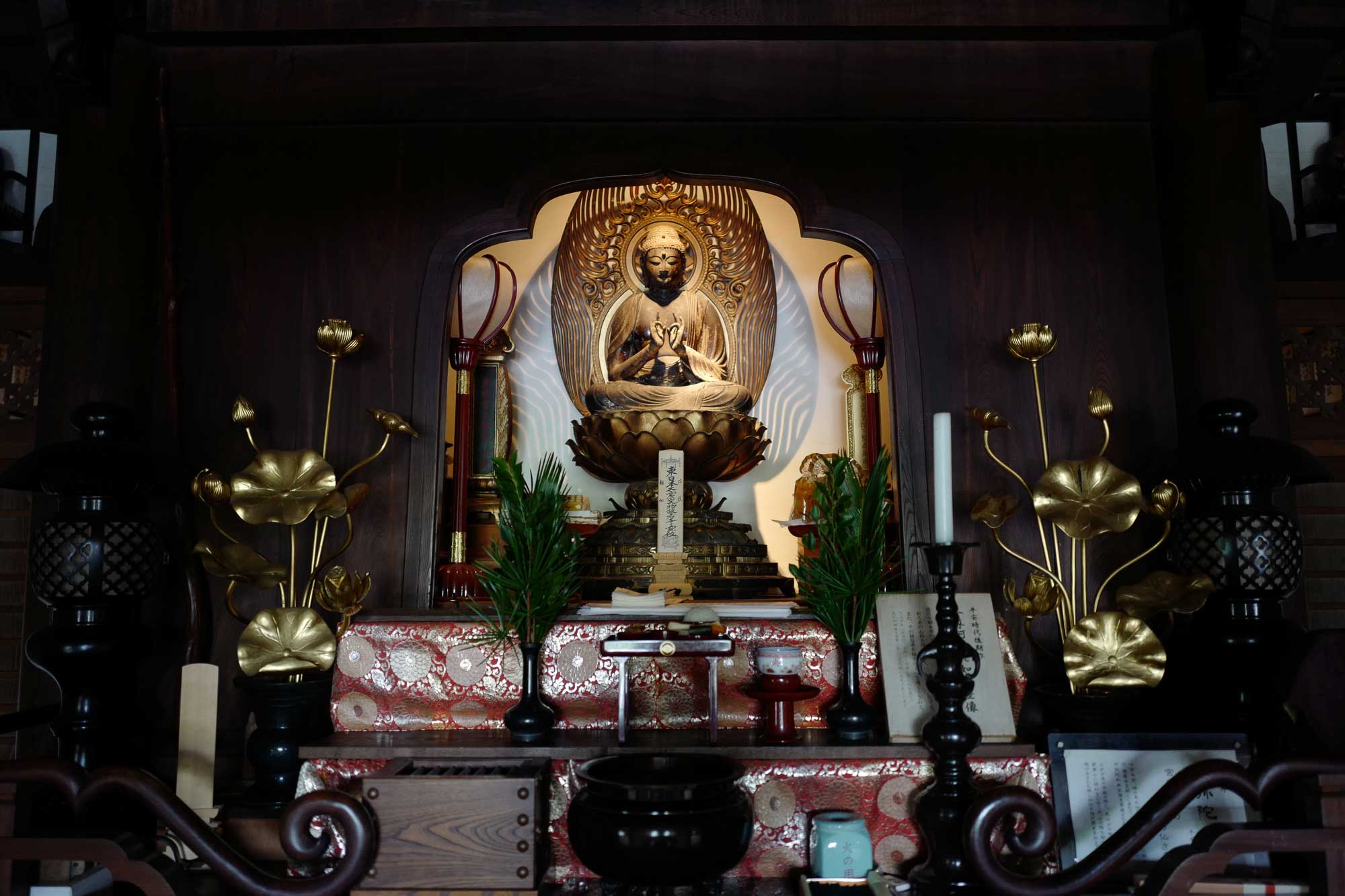
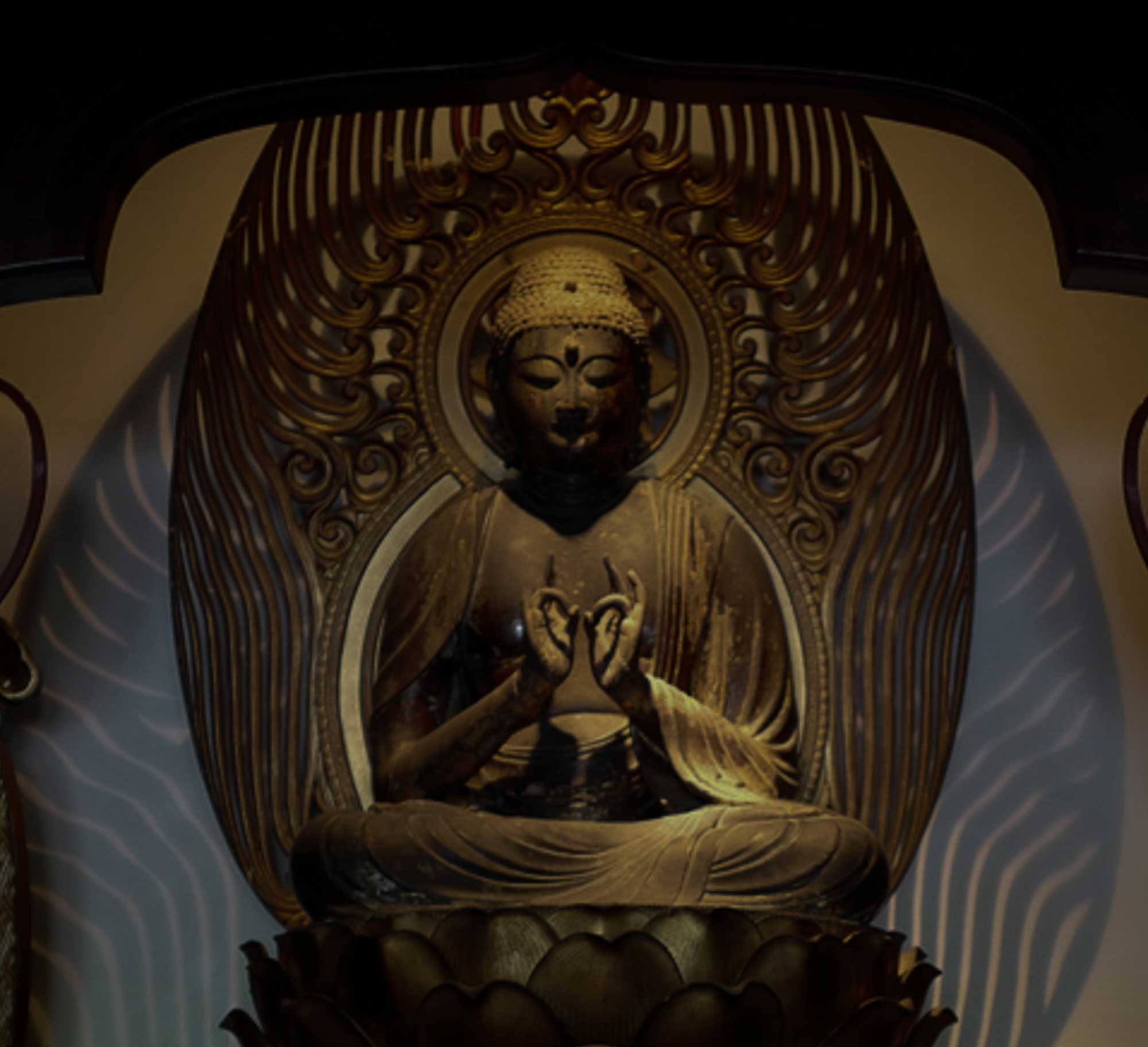
Amida Nyorai
Seated Buddha
Ryo-un-Ji is honoured to have amongst its collection of art works and cultural artefacts, the seated statue of Amida Nyorai (celestial Buddha). The statue is over 1,000 years old and was originally carried to Ryo-un-Ji, from Kyoto, by Crown Prince Yasuhito Kideranomiya during his flight from the city, 700 years ago. The statue is a significant example of Japanese Buddhist art, which has been passed through many generations of The Royal Family, and despite its age and having survived various disasters and human conflicts, remains to this day to be in largely perfect condition.
We recommend you begin your tour of Ryo-un-Ji at the seated statue of Amida Nyorai before following the signs to explore the rest of the temple and estate.
Temple Gardens
Muryoju - front garden
Located at the temple front, the Muryoju Garden was designed by Yasuo Kitayama, a renown contemporary garden designer who is often compared to the 17th century’s Enshu Kobori, the architect and landscape gardener responsible for Kyoto’s famous ‘Imperial Villa Katsura.’
Kitayama, deliberately kept the garden walls low to allow views to people passing on foot or by car and hopefully to entice them into the garden; thus expressing the openness and inclusive nature of both Buddhism and Ryo-un-Ji Temple.
Muryoju is a stone garden; the largest stone, at the front, represents the Amida Nyorai, which together with the stones to the left and right represent the ‘Buddha Triad’. The surrounding ten stones represent the ten ‘Great Disciples.’ The Buddha is situated in a symbolic ‘Paradise,’ with a turtle to the west and a dragon to the east, to watch over the Buddha. The dragon faces the turtle and the turtle faces the Buddha, which creates and symbolic circle.
By passing through the ‘Shujo Gate’ you are entering the universe of the Buddha and we hope in doing so you can feel the transition from the ‘everyday’ to the realm of the Buddha.
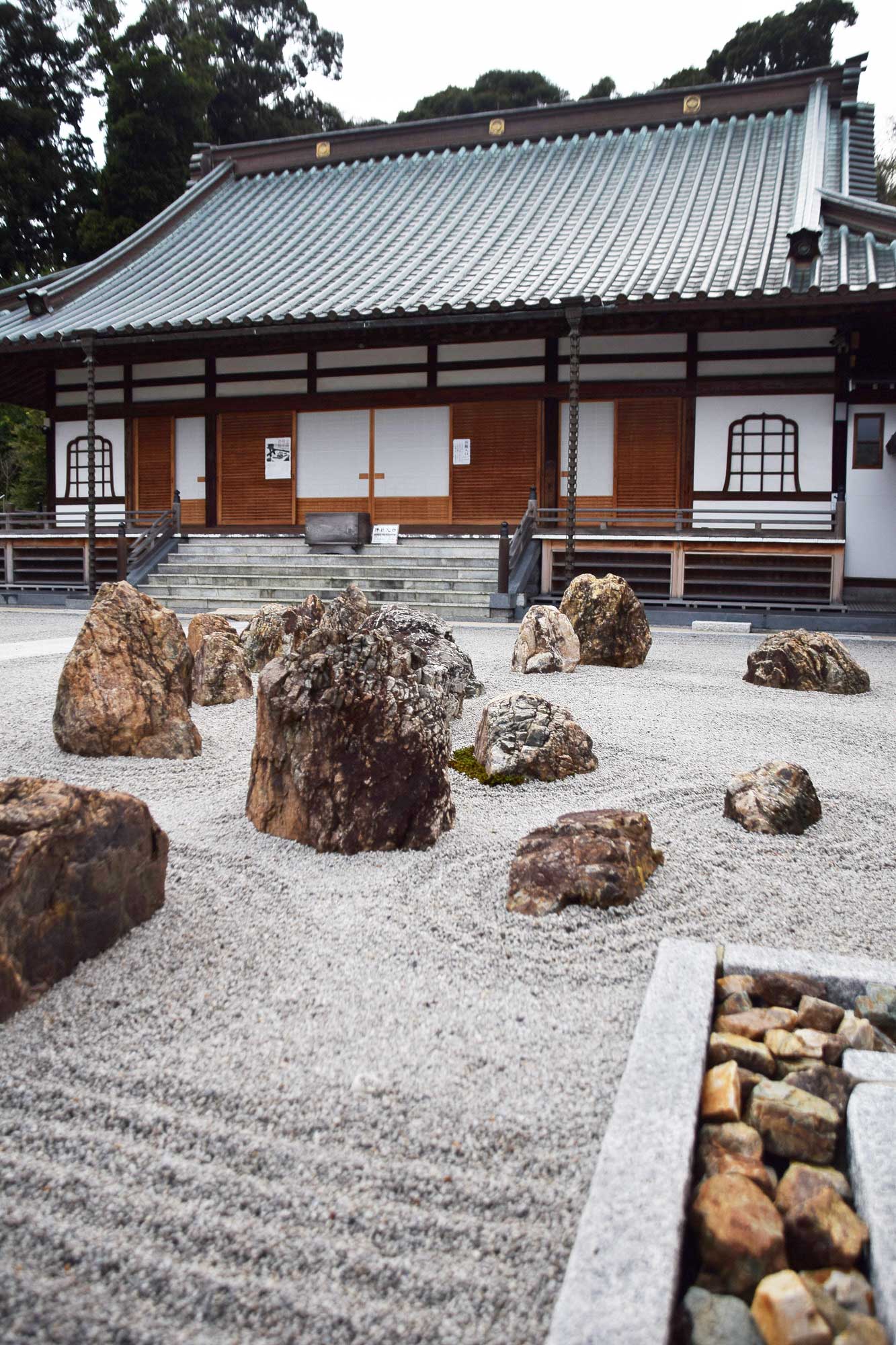
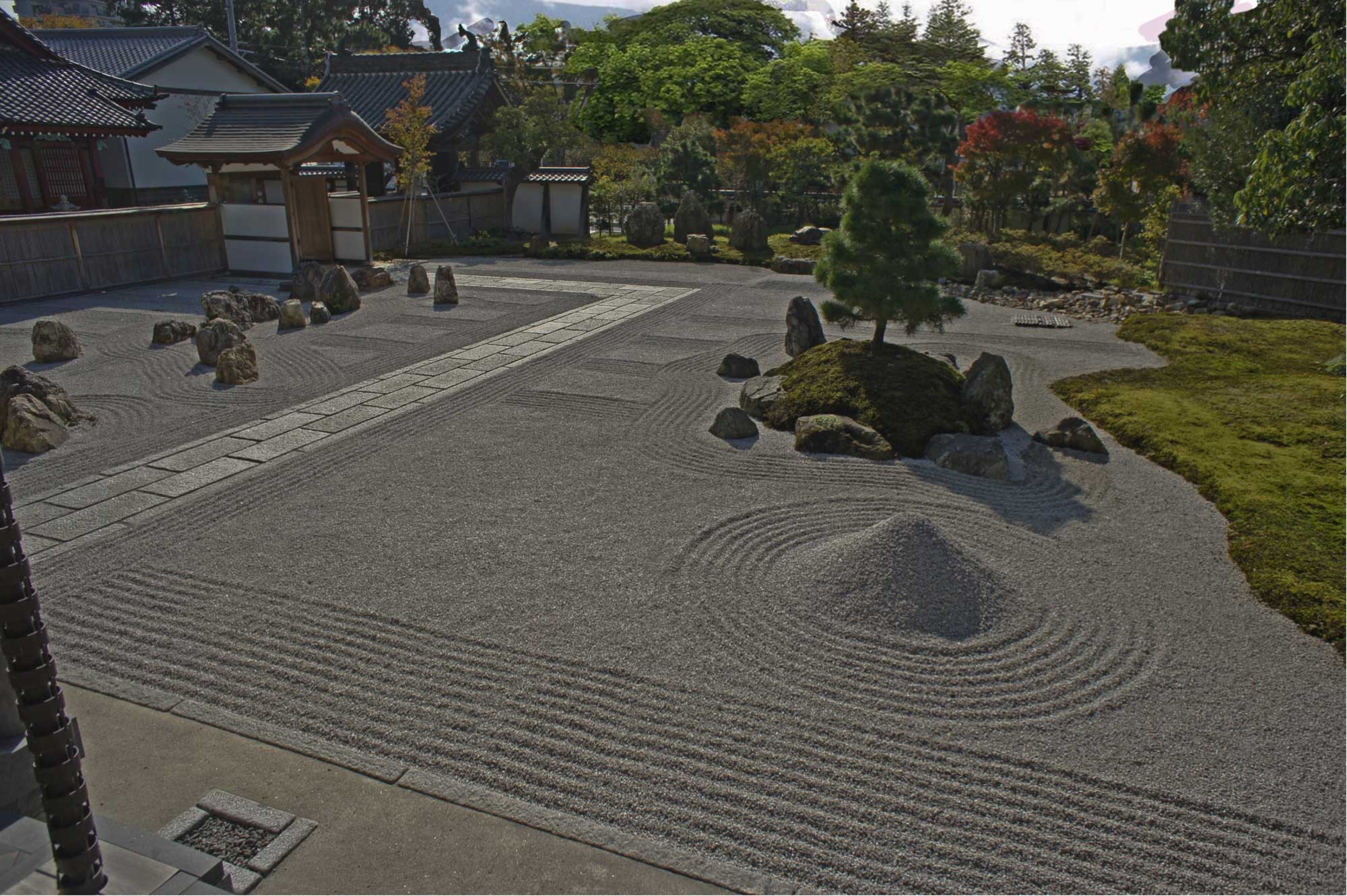
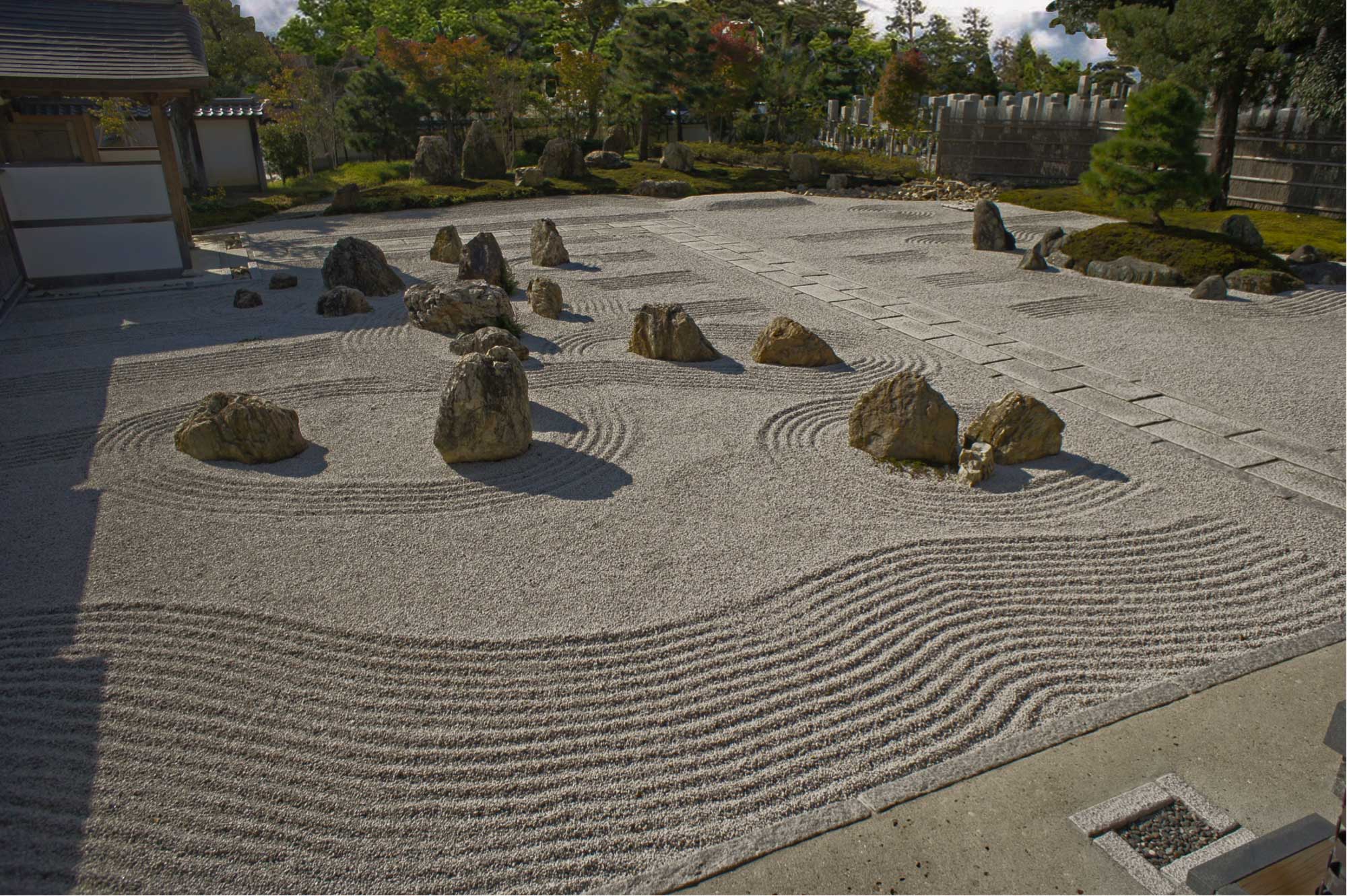
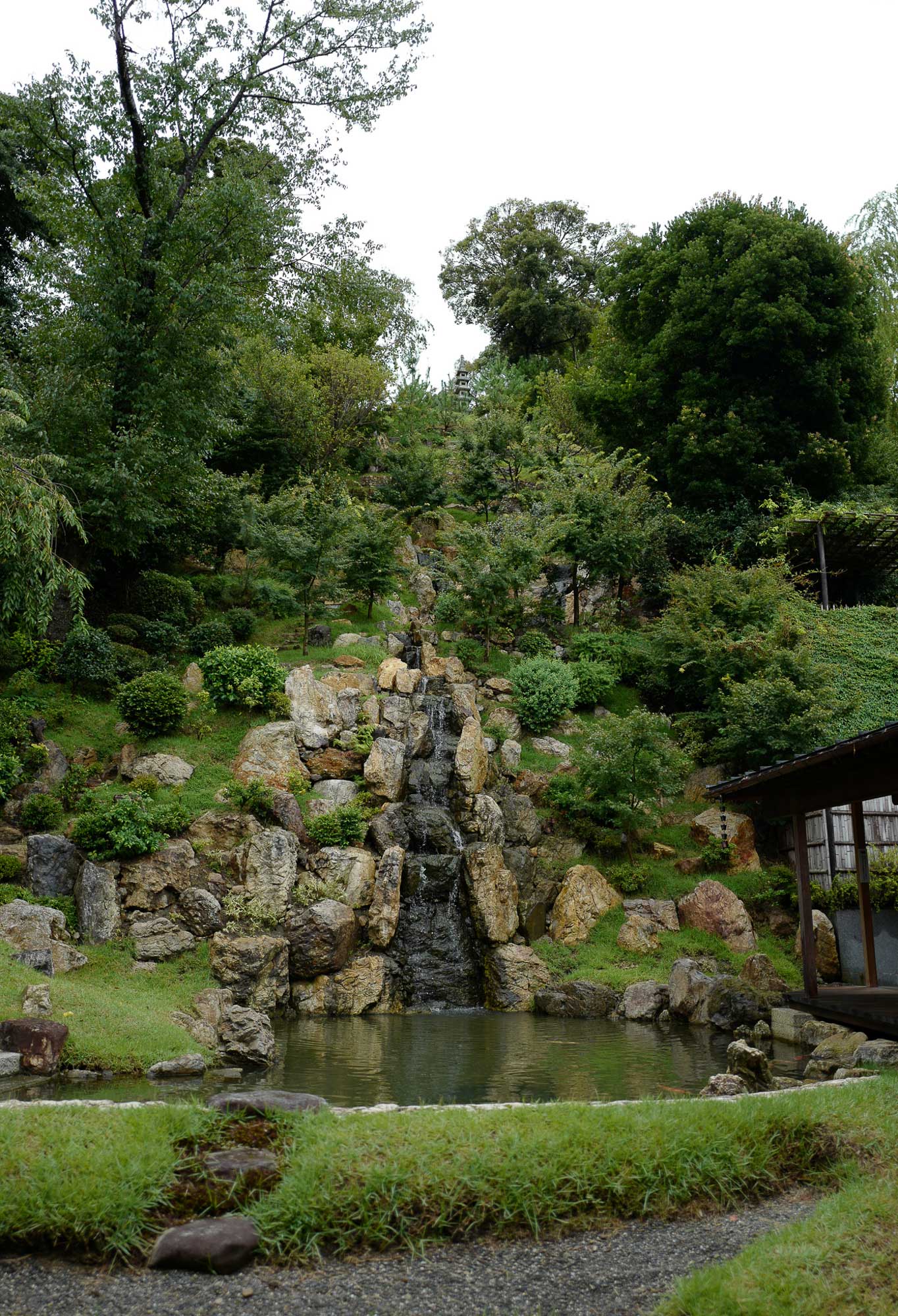
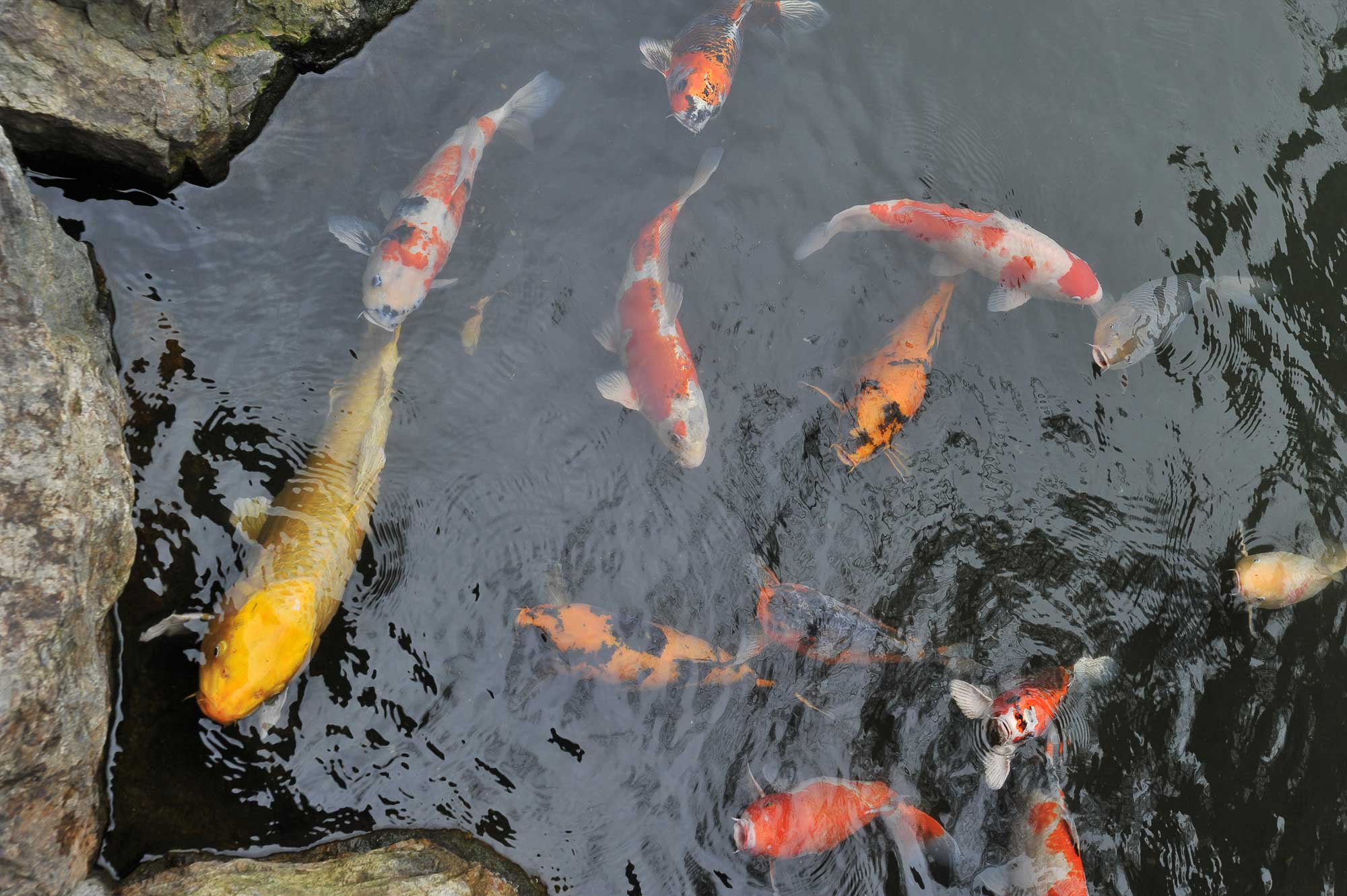
Shojo - rear garden
The Shojo Garden is the main temple’s rear garden. Despite having an imposing stone arrangement this garden also utilises symbolic water features.
A paved path guides visitors around the pond where you can view the stone garden. A waterfall, called ‘Mui-no-taki’ sends a stream flowing along the path to the entrance of the temple. Although, seeming ordinary, this stream reaches the ‘Paradise’ in the Muryoju Garden at the temple front, thus symbolically joining both gardens.
These gardens should be considered as ‘works in progress’ and essentially reflect the ever changing state of there natural world. Kitayama predicts it will take 30 years to complete both in which time the gardens will have had the opportunity to ‘relax’ and for the ‘shrubs to form a forest.’
At a time where many of us seek the ‘finished’ and the ‘perfect’ please take the time to experience, first hand, the gentle flow of time and the ephemeral quality of nature in these gardens.
Sixteen Scenes from the Buddhist Realms of Heaven and Hell
According to Buddhist belief all sentient beings are trapped in a cycle of suffering; the cycle of death and rebirth (Sanskrit — Samsara). Their only escape from this cycle to achieve enlightenment (Sanskrit — Bodhi).
The sixteen scenes before you depict the sixteen levels from this cycle of suffering which can be loosely compared to western concepts of ‘Heaven and Hell.’
In times before The Enlightenment and the advent of scientific discovery, people understood the world differently, or rather they did not understand much of the world around them. When they watched the sun set they had no way of knowing the sun would rise again the following day; other than what experience suggested to them. When the tide went out how could they guarantee that it would return within six hours?
Similarly, people had no idea of what happened after death. They had to imagine what lay ahead. The world-over faiths have described the afterworld as a place or trial, torment and suffering with the purpose of helping people lead better, more virtuous lives.
In a contemporary world where much of life and nature’s mysteries have been rationalised, studied and explained this world of suffering in the after-life is no longer compelling and certainly to the majority people, no longer believable.
However, if we take time to examine the images and to reflect upon the suffering depicted and its causes we will surely see something analogous with our own moral dilemmas faced in contemporary life.
Even now, we can look at these pictures and reflect on our own lives and how we should live them.
We are pleased to provide an English language explanation of these images, which is quite rare to find in Japan. For maximum appreciation please study the images closely whilst considering our written explanations carefully.

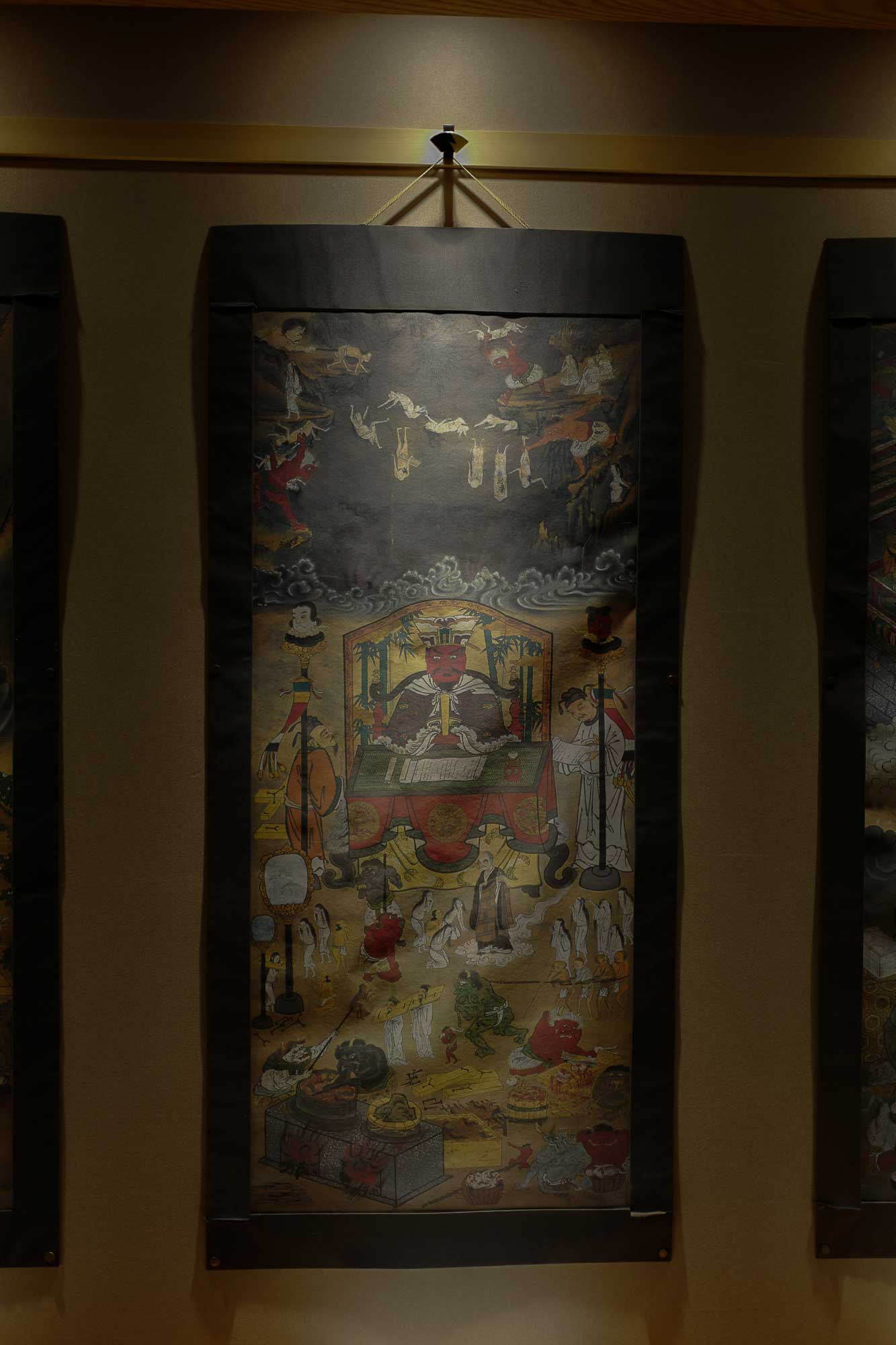
Visitor Information
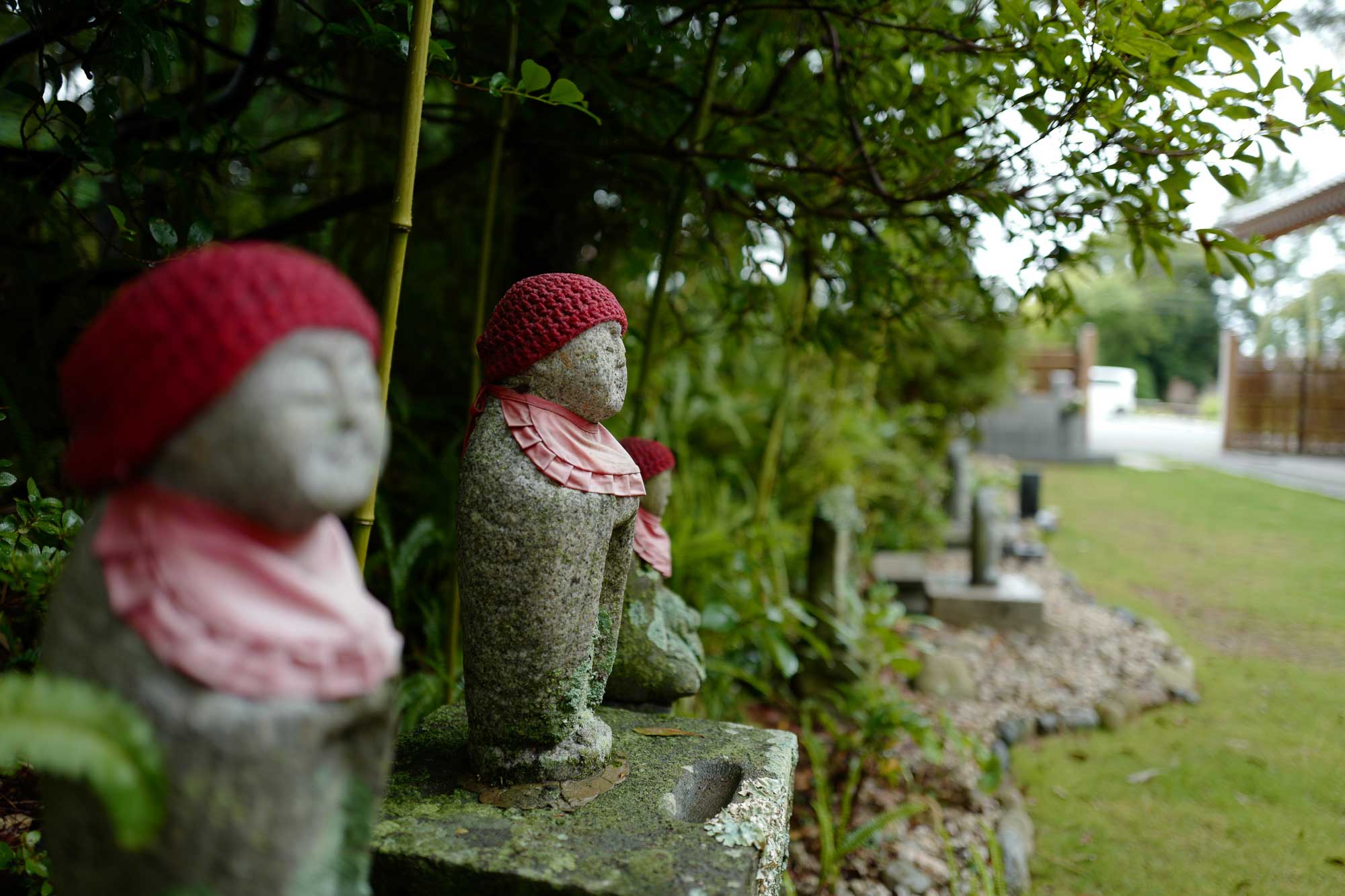
Opening hours
9:00 ~ 17:00 (last entry 16:30)
Admission fee
There is no charge for admission. *
*Access to the temple and its facilities is free; however we sincerely appreciate any kind donations you wish to make, in the form of ‘dropped’ currency (into traditional money cask ‘saisen bako’) and assure you that any donations will be used towards the upkeep and restoration of the facility and its treasures.
Entry
Please enter through the main entrance of the main building
Please note
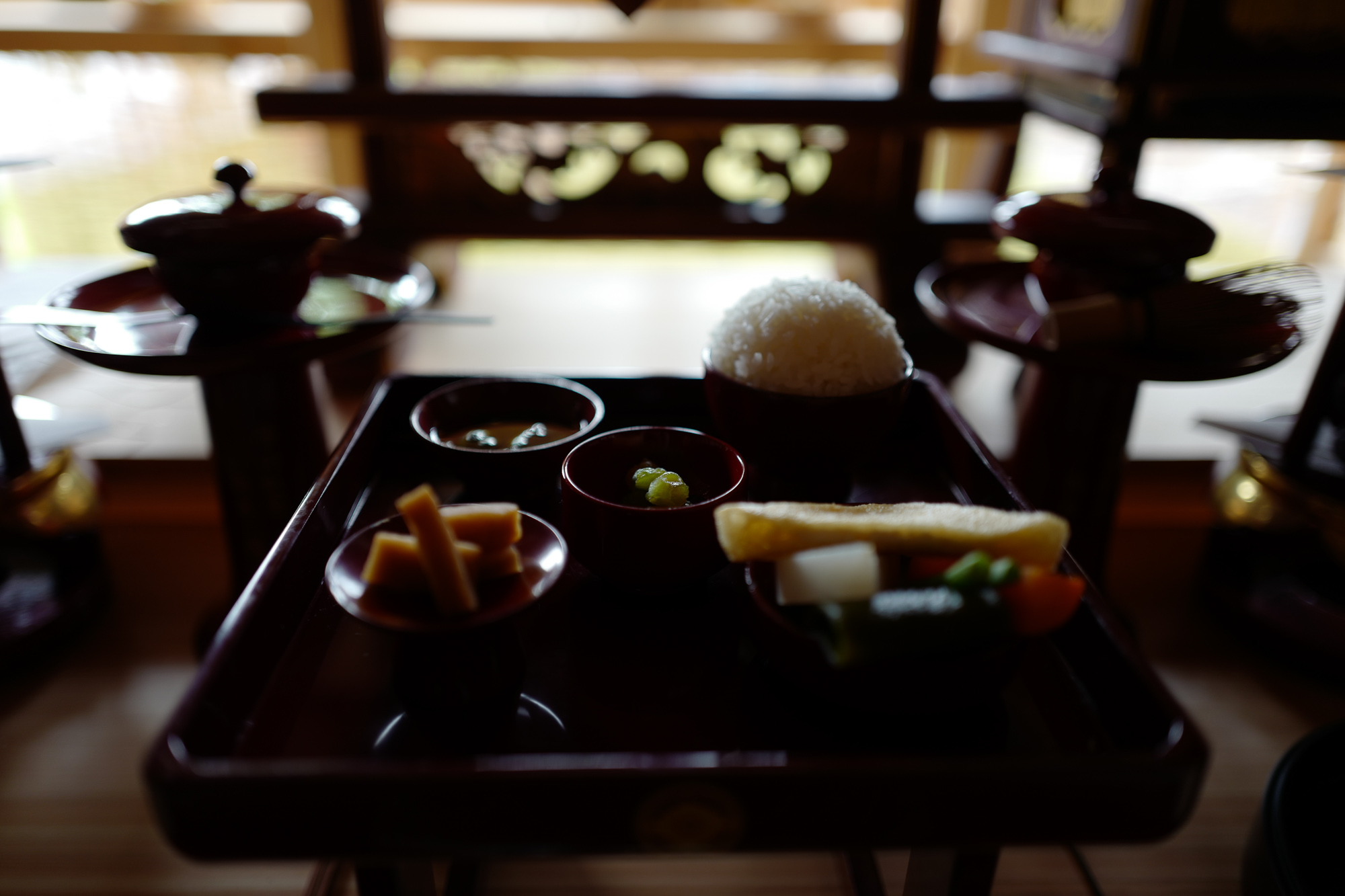
Ryo-un-Ji is a functioning buddhist temple and as such we hold regular services. During these services some areas of the temple will be ‘off limits’ to visitors.
The facility housing the world’s biggest sutra can be entered even during service time. However, on weekend mornings we often hold services. We appreciate your understanding and cooperation in observing a code of silence during service time.
- Please do not eat or drink inside.
- Please do not touch any of the exhibits.
- Please feel free to take photographs of the exhibits, gardens and the grounds.
- Please do not use tripods or camera flash inside the temple.
- Please feel free to share pictures online via your own social media accounts.